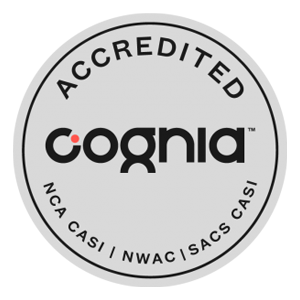AP Chemistry Course Description
The AP Chemistry course description encompasses a rigorous college-level chemistry curriculum designed to challenge high school students through comprehensive units, extensive laboratory work, and preparation for the AP exam while developing critical thinking skills and analytical abilities.
1. What Is AP Chemistry?
The AP Chemistry course represents an introductory college-level chemistry program offered to motivated high school students interested in advanced scientific education.
1.1 Definition and Focus
AP Chemistry mirrors college-level chemistry courses by emphasizing quantitative problem-solving and analytical reasoning throughout complex chemical concepts while students develop understanding of molecular collisions, chemical reactions, and intermolecular forces.
1.2 Who Should Take AP Chemistry?
Students interested in science with strong mathematics backgrounds typically excel in this AP chemistry course while those seeking college credit or preparing for engineering, biology, or STEM careers find value in this challenging class.
2. Key Course Objectives
AP Chemistry aims to develop understanding alongside practical science practices through rigorous coursework and hands-on labs.
2.1 Conceptual Understanding
Students cultivate connections between abstract chemical theories and real-world chemical phenomena by exploring how key concepts interrelate across different topics and applications throughout the comprehensive chemistry curriculum.
2.2 Scientific Application
The course emphasizes mathematical routines to solve problems for quantitative challenges while students develop essential laboratory techniques and master representing data from complex experimental investigations effectively.
3. Prerequisites and Recommended Background
Success in AP Chemistry requires solid academic preparation including prior chemistry exposure and mathematical proficiency alongside strong study habits and critical thinking abilities.
3.1 Preparatory Course Work
Students must complete introductory high school chemistry and demonstrate proficiency in Algebra II before enrolling since these foundations support understanding advanced chemical properties and mathematical routines.
3.2 Essential Skills and Mindset
Consistent problem-solving approaches combined with critical thinking prove essential while students must manage heavy workloads and maintain disciplined study schedules throughout this demanding AP designation course.
4. Course Content Overview
The AP Chemistry curriculum spans nine interconnected units covering fundamental chemical principles from atomic structure through advanced thermodynamics, kinetics, and electrochemistry.
4.1 Atomic Structure and Properties
This unit explores atomic theory including electron configuration and periodic trends which establish foundations for understanding chemical bonding patterns and predicting physical properties across periodic table elements.
4.2 Chemical Reactions and Stoichiometry
Students master balancing chemical equations while learning reaction types and limiting reagent calculations using molar mass that connect theoretical stoichiometry to practical laboratory work and everyday chemical reactions.
4.3 Thermodynamics, Kinetics, and Equilibrium
These units introduce enthalpy changes and Gibbs free energy alongside reaction rates and Le Chatelier’s principle demonstrating how thermodynamics considerations and kinetics fundamentally shape chemical processes and equilibrium.

5. Hands-On Laboratory Component
Laboratory investigations constitute essential AP Chemistry experiences requiring students to spend significant time conducting inquiry-based investigations and analyzing results.
5.1 Inquiry-Based Experiments
Students design original investigations that encourage creative hypothesis testing while developing skills allowing students to interpret models and sophisticated data analysis techniques throughout the laboratory curriculum.

5.2 Required Lab Hours and Reports
The College Board mandates minimum twenty-five percent instructional time devoted to hands-on labs while students learn proper documentation techniques through writing detailed reports systematically.
5.3 Safety and Best Practices
Proper chemical handling and equipment usage remain paramount while students cultivate habits of precise measurement and meticulous record-keeping essential for accurate scientific investigation and reproducible results.

6. The AP Chemistry Exam: Structure and Tips
The comprehensive AP chemistry exam tests conceptual understanding and problem-solving abilities through multiple-choice scientific questions and free-response problems requiring strategic preparation.
6.1 Multiple-Choice Section
Sixty questions spanning ninety minutes test broad topic knowledge requiring students for the AP exam to pace themselves carefully while employing strategies for eliminating incorrect answers effectively.

6.2 Free-Response Section
Three long-answer and four short-answer questions demand clear work presentation with structured responses that demonstrate mathematical routines to solve problems and thorough understanding of chemical principles involved.
6.3 Scoring and Grade Scale
The AP exam uses a five-point scoring system where partial credit rewards correct methodology even with computational errors while comprehensive understanding across concepts determines final scores effectively.
7. Skills and Competencies Developed
AP Chemistry cultivates essential scientific competencies including critical thinking skills and collaborative abilities valuable beyond the chemistry classroom.
7.1 Critical Thinking and Problem-Solving
Students apply logical reasoning and experimental approaches to complex chemistry challenges while translating theoretical understanding into accurate quantitative calculations requiring multi-step mathematical routines throughout coursework.
7.2 Communication and Collaboration
Laboratory partnerships and group studies emphasize teamwork while students develop abilities to present findings clearly and interpret data concisely for effective scientific communication across contexts.
8. College Credit and Advanced Placement
Strong AP Chemistry exam performance can earn college credit and advanced placement opportunities significantly impacting students’ academic trajectories and reducing undergraduate course requirements.
8.1 Credit Policies and Placement
Different colleges maintain varying policies for awarding credit or advanced placement based on AP exam scores making researching specific institutional requirements essential for maximizing earned benefits effectively.
8.2 Accelerated Academic Path
Students interested in earning qualifying scores can skip introductory college-level chemistry courses thereby creating opportunities for pursuing advanced electives or valuable internships during undergraduate studies instead.

9. Tips for Success and Study Strategies
Mastering the AP chemistry course requires strategic approaches to studying chemical phenomena and consistent practice throughout the academic year.
9.1 Building a Strong Foundation
Students should review pre-AP chemistry concepts including electron configuration, VSEPR theory, and algebra basics while maintaining regular practice with chemical formulas and balancing equations plus mastering unit conversions.
9.2 Practice Makes Perfect
Working consistently through past examinations and textbook problems proves invaluable while leveraging online resources and comprehensive problem sets enhances understanding of reaction mechanisms and builds confidence effectively.
9.3 Effective Time Management
Breaking the extensive exam description into manageable study chunks helps maintain progress while setting specific deadlines for completing lab reports and problem sets ensures consistent advancement. See our ideal study space guide.
10. Additional Resources and Next Steps
Multiple support resources exist to help students for the AP Chemistry course succeed and plan continued chemistry education for further studies. See our online high school science classes guide.
10.1 Review Books and Online Tools
Popular preparation materials including Princeton Review and Barron’s guides complement Khan Academy lessons while official College Board exam description resources provide authentic practice examinations for comprehensive preparation.
10.2 Planning Your AP Chemistry Journey
Coordinating with teachers and counselors ensures comprehensive support while participating in extracurricular science activities involving compound structure, electrolytic cells, acids, or study groups deepens understanding and enriches the overall learning experience.























